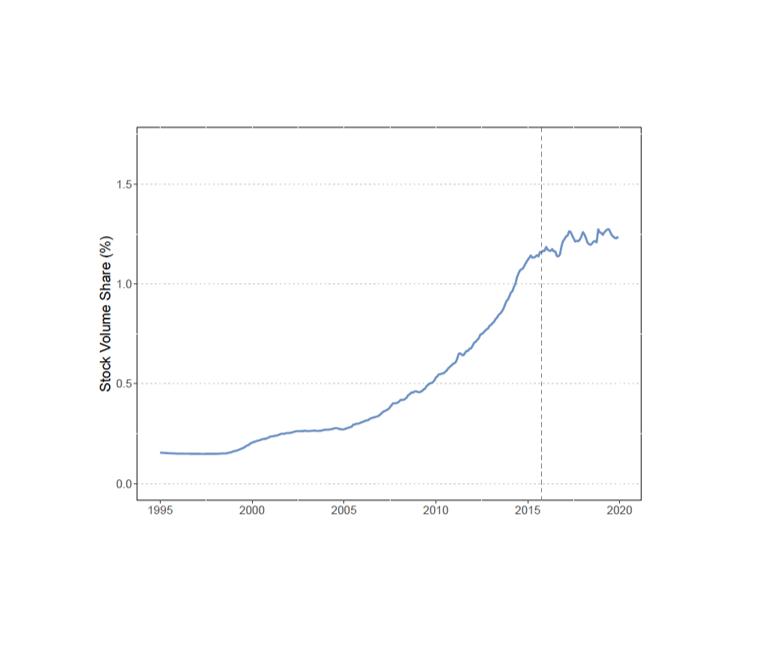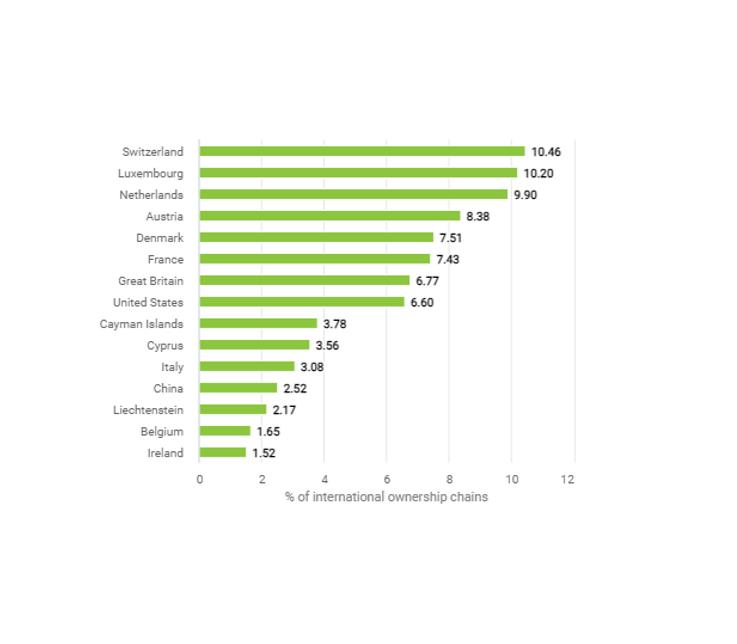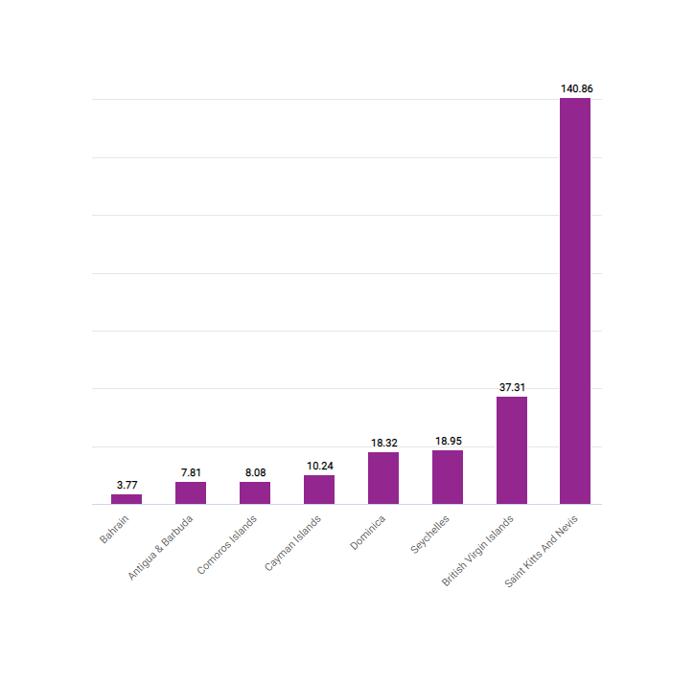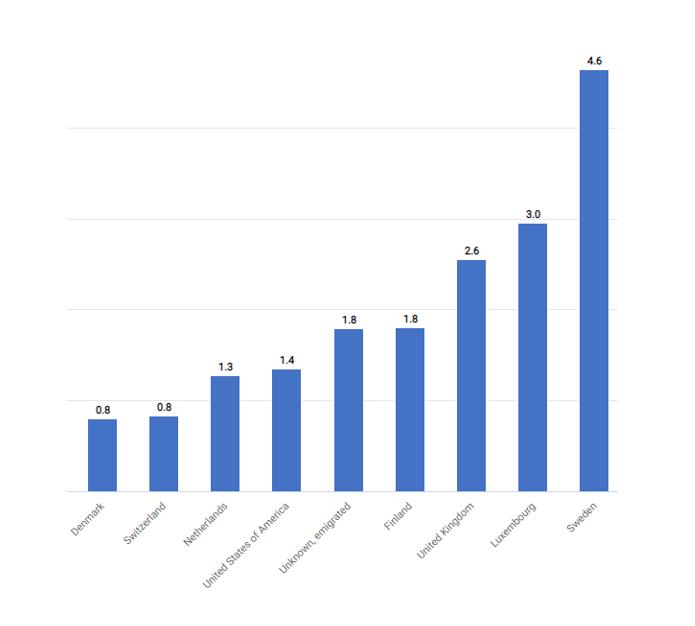Homes incorporated: Offshore ownership of real estate in the U.K.
Will we ever be able to track offshore wealth? Evidence from the offshore real estate market in the UK
The implementation of the Common Reporting Standard (CRS) was a major step to reduce tax evasion, requiring participating jurisdictions to collect and exchange financial account information on foreign tax residents. At present, the CRS has the drawback of covering only financial assets. This provides an incentive to switch to non-financial assets to avoid reporting. In their study, Bomare & Le Guern Herry examine whether real estate investment in the UK through offshore companies increased as a result of the introduction of the CRS.
They use administrative data on UK real estate purchases by foreign companies. To obtain information on the country of origin of beneficial owners behind the tax haven companies, they use leaked data such as the Panama Papers, the Pandora Papers or the OpenLux. This allows the authors to isolate tax havens “highly exposed” to the implementation of the CRS, i.e. with more than 75% of their company beneficial owners coming from early-adopting countries.
Bomare & Le Guern Herry estimate that £16 to £19 billion have been invested in the UK real estate market between 2013 and 2016 in reaction to the CRS. An extrapolation to the global scale would suggest that 24% to 27% of the offshore financial wealth that left tax havens following the CRS policy were ultimately shifted to real estate.
Total value of transactions from companies incorporated in “highly-exposed” tax havens vs other havens
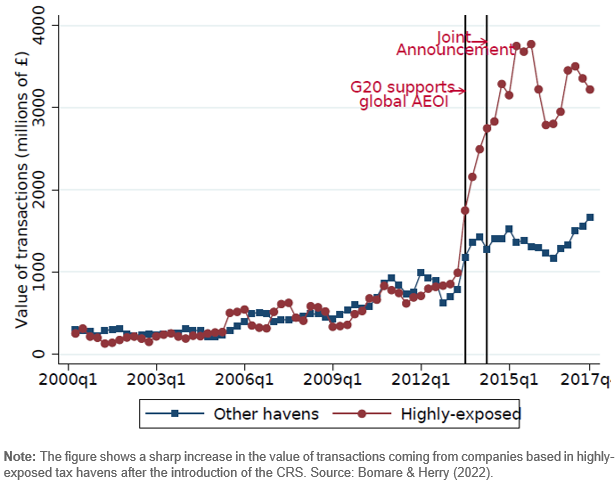
Key results
- In reaction to the implementation of the Common Reporting Standard (CRS), £16 to £19 billion have been invested in the UK real estate market.
- The CRS transparency shock led to a significant increase of UK real estate investments from companies incorporated in highly exposed tax havens.
- Applying the UK estimates to the global scale would suggest that 24% to 27% of the offshore financial wealth fleeing tax havens might have been shifted to real estate.
Data
The authors combine two types of data sources. They use administrative data on real estate purchases made by foreign companies in the UK and leaked data from the Panama Papers, the Pandora Papers, and the OpenLux, allowing to trace ultimate ownership for a subsample of transactions.
Methodology
Administrative data on real estate purchases only contain the nationality of the foreign companies, which in many cases differs from the country of residence of their beneficial owners. To address this issue, the authors use leaked information on the country of residence of the owners of shell companies. For example, they find that 53% of the people setting up companies in Jersey are from the United Kingdom, 7% are from South Africa etc.
Knowing the proportions of country origins of shell company owners for each tax haven, they divide tax havens in two groups: The group of highly-exposed tax havens is defined as jurisdictions that have more than 75% of their company beneficial owners coming from early-adopting countries of the CRS. The other group is composed of the remaining tax havens.
Go to the original article
The working paper can be downloaded from the EU Tax Observatory’s website website. [PDF]
This might also interest you
The role of anonymous property owners in the German real estate market: First results of a systematic data analysis
Who owns offshore real estate? Evidence from Dubai cross-border real estate investments
Hidden in plain sight: Offshore ownership of Norwegian real estate
